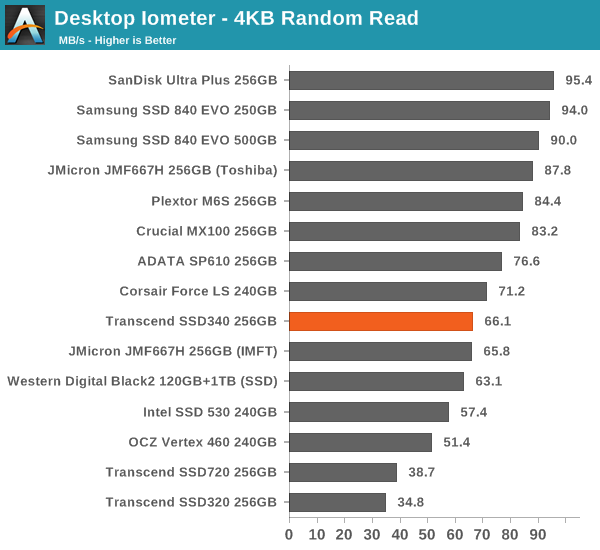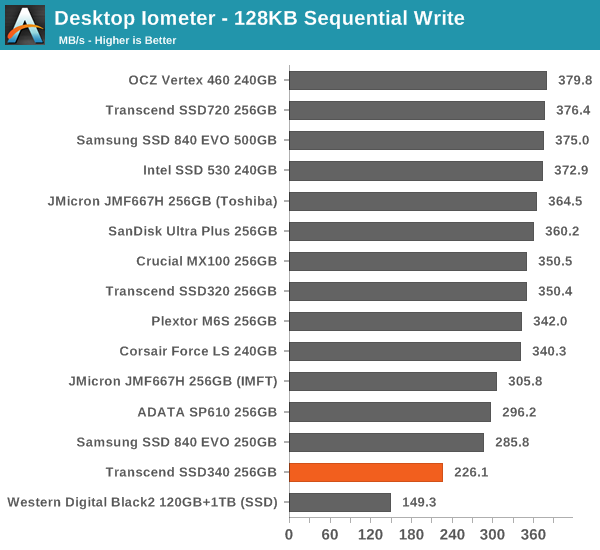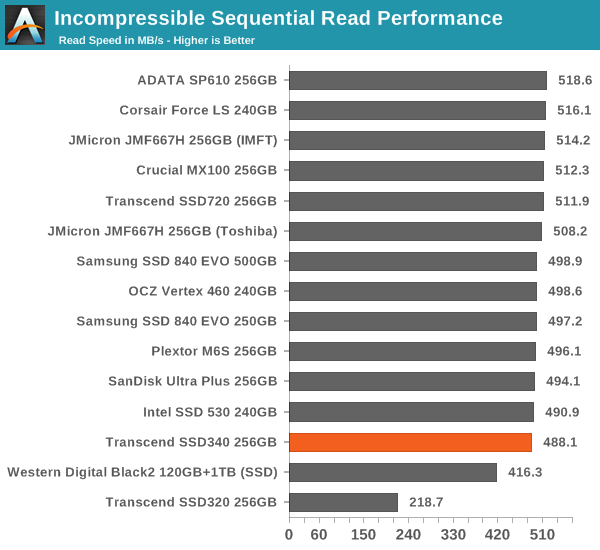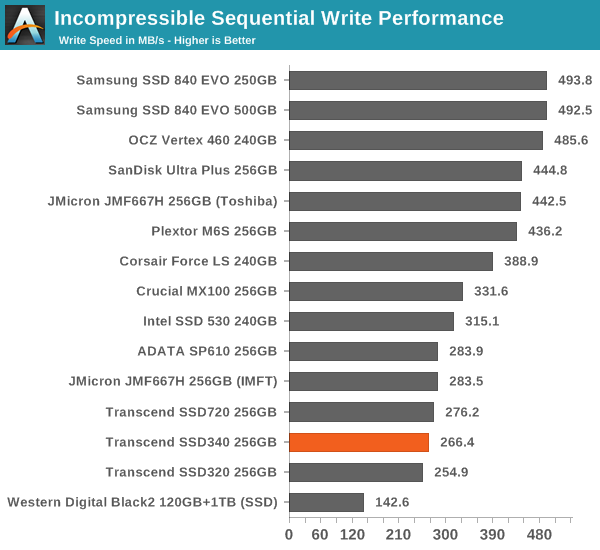Transcend SSD340 (256GB) Review
by Kristian Vättö on August 4, 2014 5:00 AM ESTRandom Read/Write Speed
The four corners of SSD performance are as follows: random read, random write, sequential read and sequential write speed. Random accesses are generally small in size, while sequential accesses tend to be larger and thus we have the four Iometer tests we use in all of our reviews.
Our first test writes 4KB in a completely random pattern over an 8GB space of the drive to simulate the sort of random access that you'd see on an OS drive (even this is more stressful than a normal desktop user would see). We perform three concurrent IOs and run the test for 3 minutes. The results reported are in average MB/s over the entire time.



Random performance is okay and similar to the other JMF667H SSDs. Queue depth scaling has never been JMicron's strength but then again typical client workloads do not usually go above queue depth of 5 anyway.
Sequential Read/Write Speed
To measure sequential performance we run a 1 minute long 128KB sequential test over the entire span of the drive at a queue depth of 1. The results reported are in average MB/s over the entire test length.

Sequential performance leaves a lot to be desired. Especially write performance is poor for a 256GB drive.

AS-SSD Incompressible Sequential Read/Write Performance
The AS-SSD sequential benchmark uses incompressible data for all of its transfers. The result is a pretty big reduction in sequential write speed on SandForce based controllers.












57 Comments
View All Comments
ddriver - Monday, August 4, 2014 - link
I didn't say "value".Impulses - Monday, August 4, 2014 - link
Besides, $30 32GB SD cards actually hit 45-60MB/s sequential.. Think I saw a $65 64GB PNY rated at 90/60 R/W, doesn't get any more value priced than that, unless you meant bargain bin SD cards...hojnikb - Tuesday, August 5, 2014 - link
Yeah, but sd card like that would be pretty unsuitable for running OS.Impulses - Tuesday, August 5, 2014 - link
Obviously, their random access speed sucks, he and I were just drawing a parallel to other cheap devices with sequential speeds that aren't very far off... Shoot, I've paid <$50 for 32-64GB USB 3.0 flash drives that hit 200MB/s sequential read/writes. I think any enthusiast knows sequential speed isn't ultimately why you buy a SSD (most of the time), but still...willis936 - Monday, August 4, 2014 - link
I'm pretty sure SSDs from 2009 are faster than this.hojnikb - Monday, August 4, 2014 - link
they are not.ddriver - Monday, August 4, 2014 - link
2-3 years ago was 2011-2012 :) I have a Samsung 830 128 GB which IRC came out around that time, and it is actually faster, reaching like 380 MB/sec in sequential reads.ddriver - Monday, August 4, 2014 - link
*writesCome on AT, what is this - the stone age? You know, the time people wrote on stone tablets and editing was pretty much impossible? How about an "edit" feature?
jabber - Monday, August 4, 2014 - link
I have to say as long as they push 150MBps+ with 0.XX access times most cases are covered.All in the access times for day to day usage, not so much the raw MBps.
hojnikb - Monday, August 4, 2014 - link
its not all about access times.You can have a bad ssd with great access times and it will still feel slow as HDD if writes are utter garbage (you can test this by installing OS on a cheap usb drive).